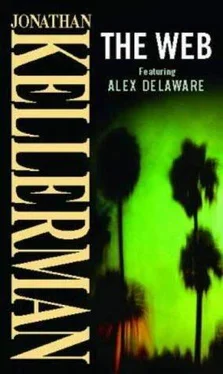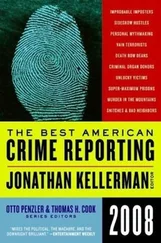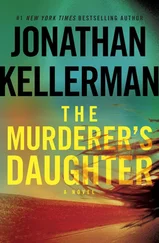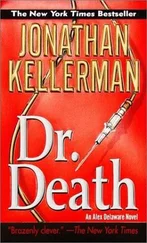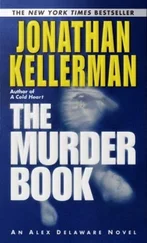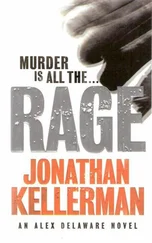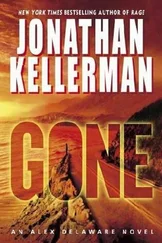"By the time I got involved, cancer was no longer a death sentence. I saw enough cures to keep me from feeling like an undertaker."
"Yes," he said. "That's wonderful. Still, you saw the misery, too. Your articles on pain control- scientific yet compassionate. I read them all. Read between the lines. It's one of the reasons I felt you were someone who would understand."
"Understand what, Bill?"
"Why a crazy old man suddenly wants to organize his life."
***
The other cases were routine and he seemed to tire. As I scanned the chart of a woman with diabetes, he said, "I'll leave you alone. Don't try to do too much, enjoy the rest of the day."
He stood and headed for the door.
"I wanted to ask you something, Bill."
"Yes?"
"I met Tom Creedman in the village this morning. He mentioned something about a murder a half year ago and some social unrest that led to the blockade."
He leaned against the jamb. "What else did he have to say?"
"That was it. Ben told me he lived here, caused some problems."
"Oh, indeed."
I pointed to the rear storage room. "Was that where Ben caught him snooping?"
"No," he said. "That was my office. Two bungalows down. Creedman claimed he'd wandered in and was on his way out when Ben found him. I might have let it pass, but he insulted Ben. That kind of thing isn't tolerated around here. I ordered him off the grounds. He delights in accentuating the negative about me and Aruk."
"He called this place Knife Castle."
"And probably told you that yarn about the slaves butchering every last Japanese."
"It never happened?"
"Allied bombs killed the vast majority of the Japanese soldiers. Three days of constant bombardment. On the third night, the Americans radioed victory and some of the forced workers left the barracks and came up here to loot- understandable, after what they'd been put through. They encountered a few survivors and there was some hand-to-hand fighting. The Japanese were outnumbered. Mr. Creedman calls himself a journalist, but he seems attracted to fiction- not that there's that much difference, nowadays, I suppose."
"He also said that you did the autopsy on the murder victim. Do you agree with the theory that it was a sailor?"
He sucked in breath. "I'm growing a bit concerned, Alex."
"About what?"
"Picker's accident, and now this. You certainly can't be faulted for seeing Aruk as a terrible place, but it's not. Yes, the murder was terrible, but it was the first we'd had in many years. And the only one of its type I remember in over three decades."
"What type is that?"
He pressed his hands together, clapped them silently and looked up at the ceiling fan, as if counting rotations.
Suddenly, he opened the door and stepped out. "I'll be right back."
The folder he returned with was brown with a white paper label.
ARUK POLICE
INVEST: D. LAURENT.
CASE NO. 00345
The first four pages were a typed report composed by the police chief in slightly clearer-than-usual cop prose.
The body of a twenty-four-year-old woman named AnneMarie Valdos had been found at three A.M. on South Beach by two crab fishermen, wedged between rocks overlooking a tide pool. The amount of blood indicated violence at the site.
Other fishermen had been at that exact spot at nine P.M., allowing Laurent to narrow the time the corpse had lain there.
During that period, birds and scavengers had done their work, but Laurent, referring to a conversation with "Dr. W. W. Moreland, M.D.," had been able to distinguish the "external shredding and mostly superficial laceration from multiple, deep knife wounds leading to exsanguination and death."
The victim had lived on Aruk for two years, coming over from Saipan to work as a cocktail waitress at Slim's but losing that job after three months due to chronic intoxication and absenteeism. Her lodgings had been a rented room in the village and she was two months in arrears. She'd been known to socialize with Navy men. The only surviving relative was an alcoholic mother in Guam who had no money to travel or to pay for burial.
Questioning the villagers produced no witnesses or leads but did elicit the repeated claim that the viciousness of the crime proved the perpetrator was a sailor.
Laurent's final paragraph read:
"Investigating officer has repeatedly attempted to communicate with Captain E. Ewing, Commanding Officer of Stanton USN Base, for possible questioning of enlisted men re: this crime, but has been unable to make contact."
I started to turn the page.
"You might not want to," said Moreland. "Photographs."
I thought about it and flipped anyway.
The shots weren't any worse than some of the ones Milo had shown me, which is to say they'd be additions to my nightmare file.
I moved past them to Moreland's report.
He'd been thorough, inspecting, dissecting, enumerating each wound.
At least fifty-three wounds, additional ones possibly obscured by scavenger bites.
The killing blow probably a neck slash.
Contrary to what Creedman had said, no sexual penetration.
All the cuts probably inflicted by the same weapon, a very sharp unserrated blade.
The next page was written out in Moreland's elegant longhand:
Dennis: You may want to keep this private.
WWM Postmortem mutilation
A. The left leg has been severed completely at the patellar joint.
B. The left femur has been broken discretely in three places, with a considerable quantity of bone marrow removed.
C. A deep 26 cm. longitudinal upward slashing wound extends from the pubic region to the sternum.
D. Disembowelment has taken place, with the small and large intestines piled atop the chest region, obscuring both breasts. The breasts are intact. (Extensive crustaceal invasion of these tissues exists, as well.)
E. Both kidneys and the liver have been
F. Decapitation has occurred between the third and fourth cervical vertebrae with the head left next to the left side of the body at a distance of 11 centimeters.
G. A deep, transverse wound of the neck is visible both above and below the decapitation line. Probable downward stroke from left ear across the neck indicates right-handed person slashing from the back. The trachea and jugular vein have been severed.
H. Significant enlargement of the foramen magnum has been accomplished, possibly with some kind of grasping/crushing instrument. Portions of the occipital skull have been shattered, probably by blunt force.
I. Both cerebral hemispheres have been removed, with the cerebellum and lower brain left intact.
I shut the file and took a slow breath, trying to settle my stomach.
"I'm sorry," said Moreland, "but I want you to see that I'm not concealing anything from you."
"The killer was never caught?"
"Unfortunately not."
"And the Navy man theory?"
He blinked and fidgeted with his glasses. "In all the years I've lived here, the islanders have never engaged in serious violence, let alone this. I suppose it could have been one of the cargo boat deckhands, though I've come to know most of them and they're decent chaps. And Dennis did question them. Unlike the sailors."
Remembering Laurent's remark about not having his call to Stanton returned, I said, "He never got access to the base?"
"No, he didn't."
"Why do you still have the file? Is the investigation ongoing?"
"Dennis thought I might come up with something if I studied it for a while. I haven't. Any suggestions?"
"It's not your typical sadistic murder," I said. "No rape- though Creedman said there was."
"You see," he said. "The man has no credibility."
"No positioning of the body, either. Mutilation, but of the head and the back and the legs, not the genitalia or the breasts. Then there's the multiple organ theft- coring out the femur to remove the marrow. It sounds ghoulish- almost ritualistic."
Читать дальше
